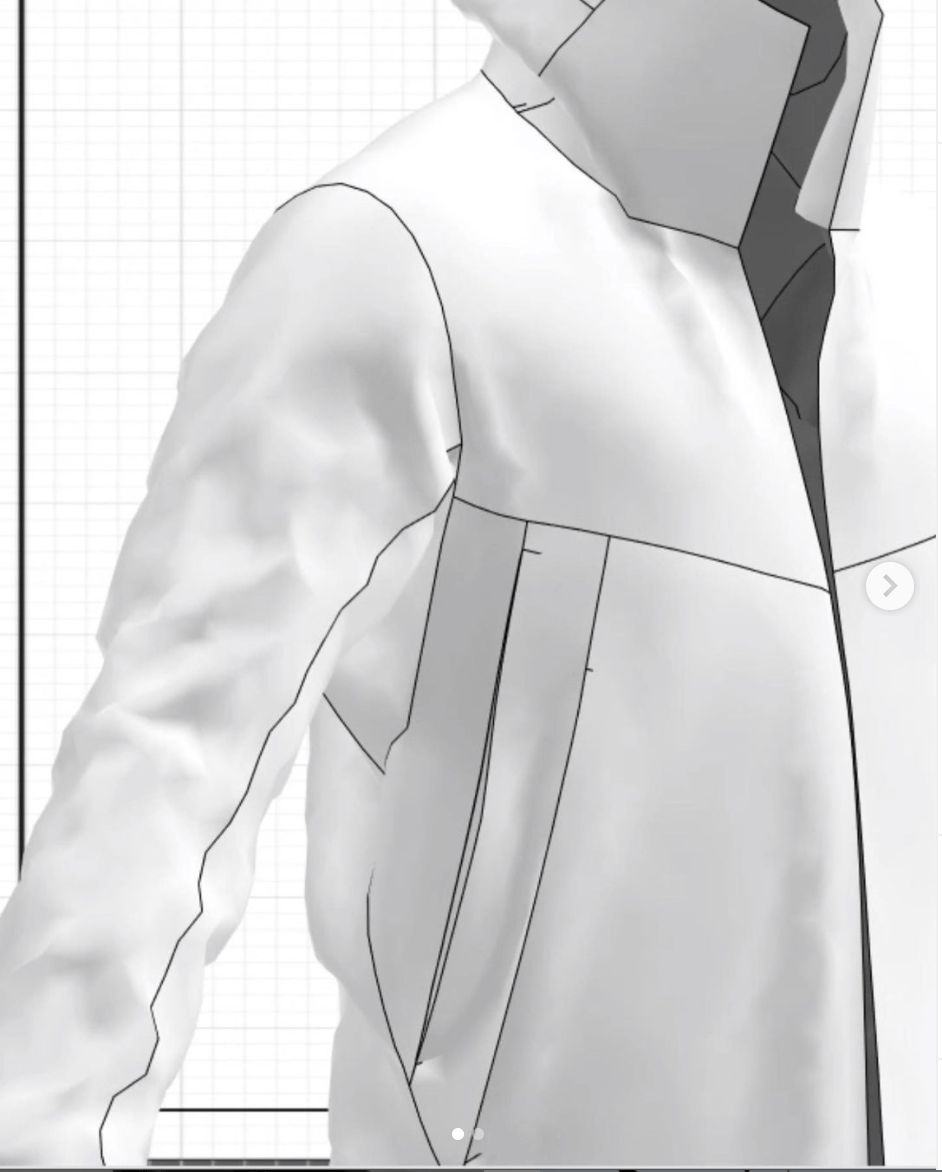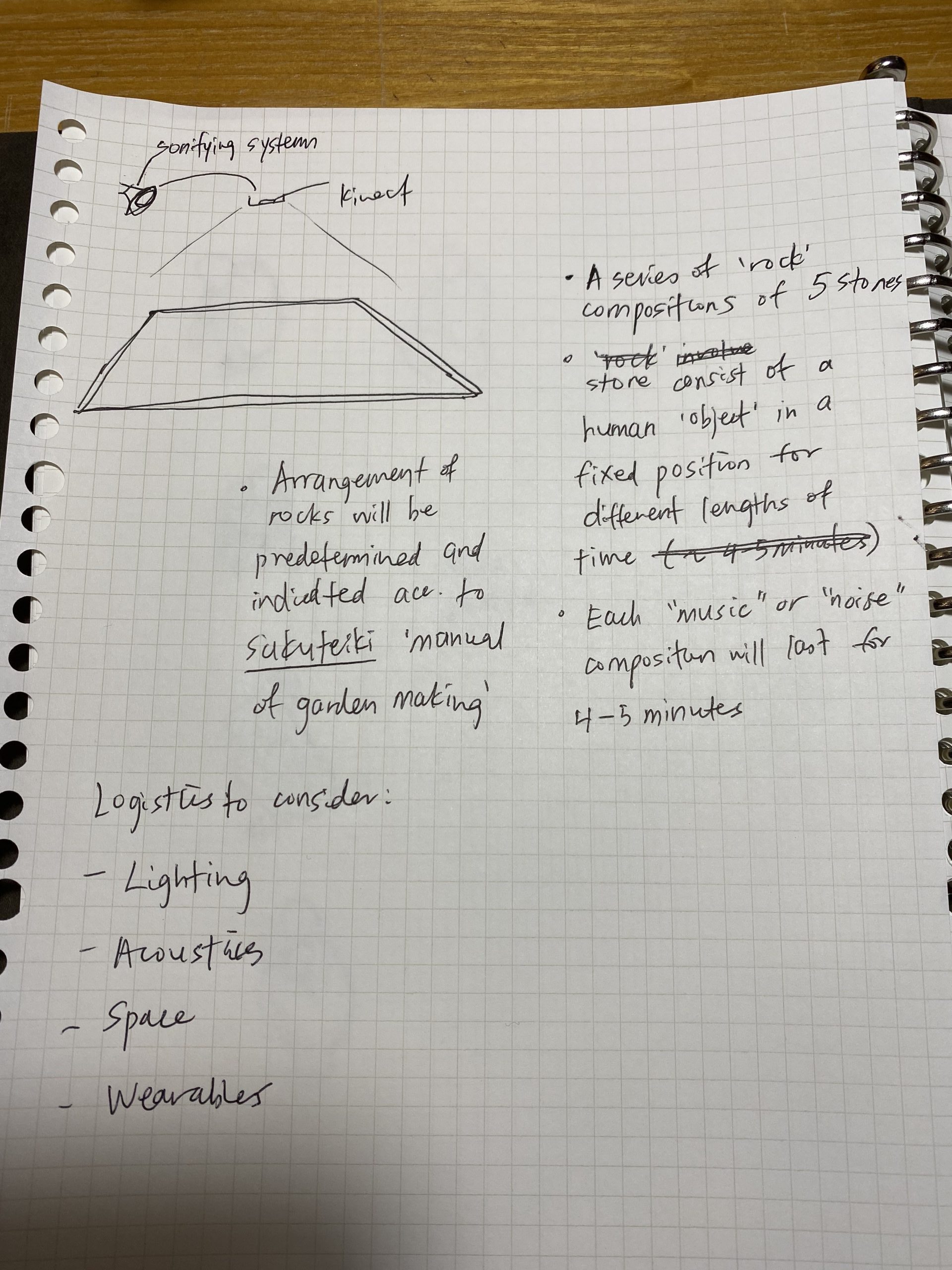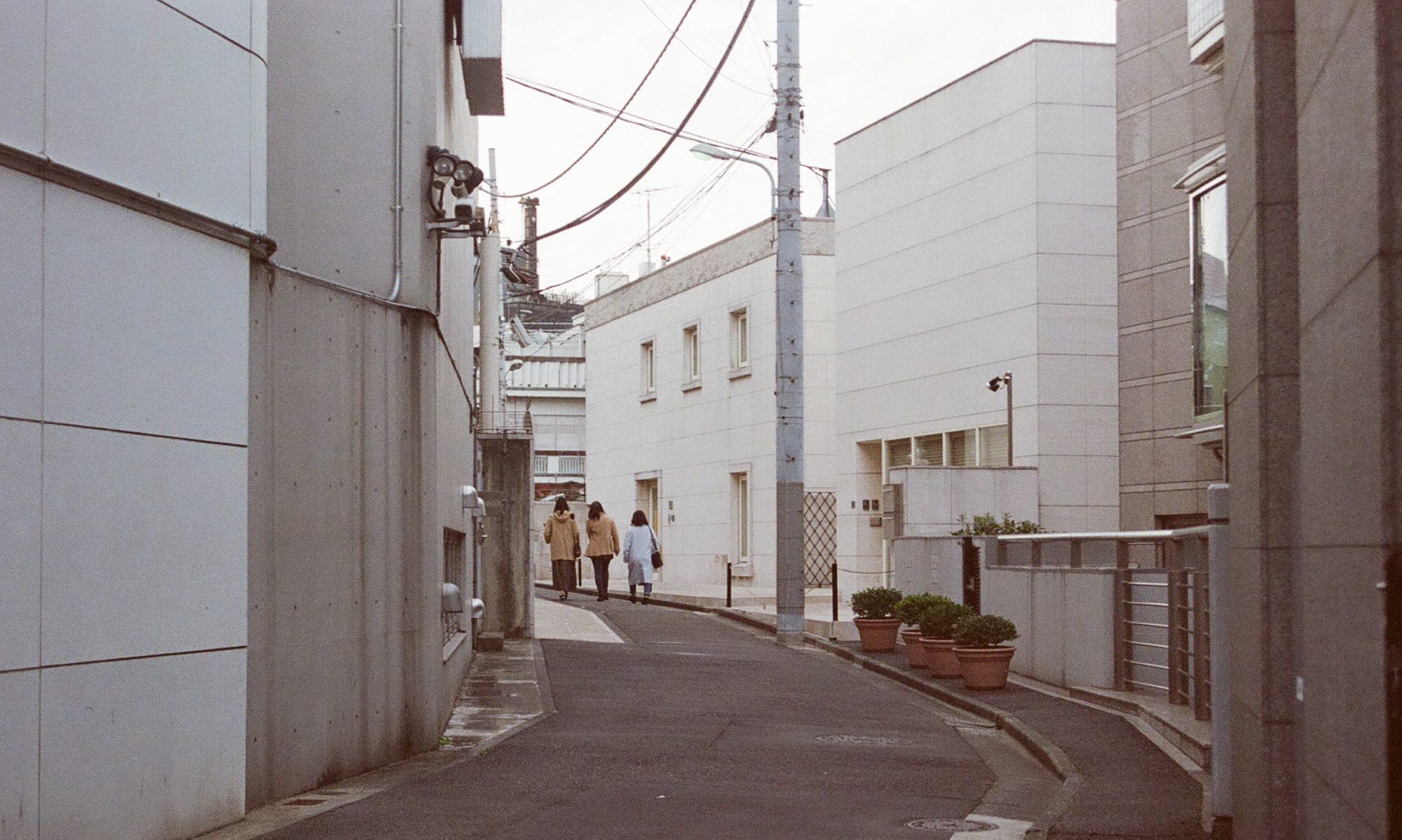logistics
date: 10 Nov, Week 13
location: Truss room/ LT (Mounting of the kinect/ camera system)
Week 11 – Process and Developing instructions
Week 12 – Set up and construction
Week 13 – Presentation
PROCESS
Human body position
Aim – To find out which positions the body should stay in and the duration to induce a sense of stiffness / being compressed and weighted
Instructions:
i. Use your body to imitate the form of the stone

ii. Experiment with different body positions for different time periods
– Different sitting and crouching positions
– Duration of 2, 5 and 10 minutes




2. Philosophy of zen gardens + the making
Zen Buddhism
japanese rock gardens – “were intended to imitate the intimate essence of nature, not its actual appearance, and to serve as an aid to meditation about the true meaning of existence.”
Selection and Arrangement of rocks
the most important part is the selection and placement of rocks.
The Sakuteiki “Records of Garden Making” – manual on “setting stones” (ishi wo tateru koto). “In Japanese gardening, rocks are classified as either tall vertical, low vertical, arching, reclining, or flat. For creating “mountains”, usually igneous volcanic rocks, rugged mountain rocks with sharp edges, are used. Smooth, rounded sedimentary rocks are used for the borders of gravel “rivers” or “seashores.”
In Japanese gardens, individual rocks rarely play the starring role; the emphasis is upon the harmony of the composition.”
– Arranging rocks according to the Sakuteiki
Make sure that all the stones, right down to the front of the arrangement, are placed with their best sides showing. If a stone has an ugly-looking top you should place it so as to give prominence to its side. Even if this means it has to lean at a considerable angle, no one will notice. There should always be more horizontal than vertical stones. If there are “running away” stones there must be “chasing” stones. If there are “leaning” stones, there must be “supporting” stones.- Sand and gravel – The act of raking the gravel into a pattern recalling waves or rippling water
Zen priests practice this raking also to help their concentration
> might omit this aspect in the project
> alternatively, I can generate “white noise” as background for the audio
MAIN EXPLORATION: Arrangement of OBJECTS vs HUMANS

Arrangement of humans in current times


3. Textures – Wearable as embodiment/ ergonomics/ texture of form

Technical Apparel
Materials to endure nature/ harsh conditions
 Cambre Jacket — Made from a durable performance denim with quick drying properties.
Cambre Jacket — Made from a durable performance denim with quick drying properties.

- Another layer to explore – embodiment with apparel to create visual texture
Volcanic rocks vs. smooth rocks (no apparel)
– Gorotex
– Ponchos
SET UP – FIRST DRAFT

PROGRESS
– Working on sonification system (generative art) currently
– Experiment with stone positions and wearable textures
– Aim to develop instructions for performance by the end of the week (OSS)
//
















